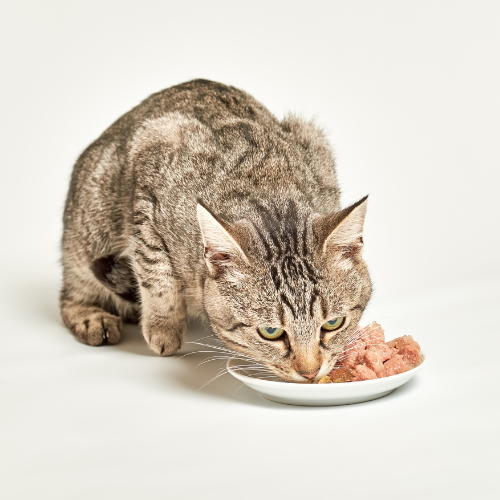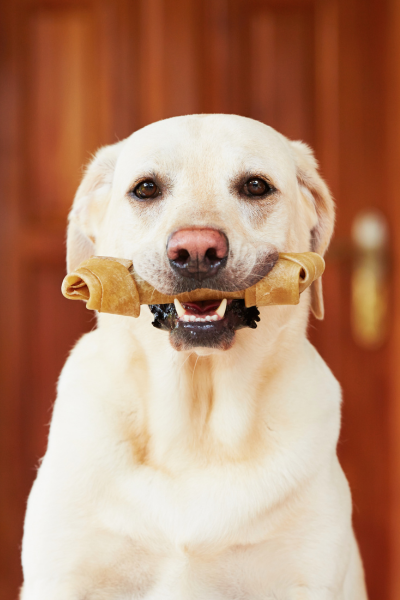Putting Your Pet on a Raw Food Diet
Raw food diets have become increasingly popular among pet owners. A raw food diet is defined as a diet where the ingredients are uncooked and derived from animals. These ingredients can include the bones, skeletal muscles, internal organs, unpasteurised milk or raw eggs of any animal. A raw food diet is sometimes referred to as Raw Meat-based Diets (RMBDs) or Bones and Raw Food/ Biologically Appropriate Raw Food (BARF). RMBDs can be home-prepared or commercially prepared. The latter can be found as fresh, frozen or freeze dried products to be given as a sole diet or as premixes that complement raw meat feeding.
The shift towards raw feeding is driven by the claim that raw feeding would be more natural for carnivores and superior compared to heat-treated processed food. These claims may sound appealing to well-intended parents that want to provide the best to their furbaby. However, before we can say that there are any benefits, there must be multiple studies and peer review journals to support the evidence. Unfortunately, raw food diets do not have any scientific evidence to prove the benefits. On the contrary, there are more studies addressing the risks of feeding raw food.


Why Not Raw Food?
- Contamination: The handling and consumption of raw food always carries the risk of contamination with pathogens. The pathogens we worry most about are Salmonella, Campylobacter, E. Coli and Toxoplasmosis because of the potential both you and your furbaby will get sick. This is especially true if there are any children, any of the elderly, or any immunocompromised individuals in your environment.
- Nutritional Imbalances: Just like people, dogs and cats each have unique nutritional requirements. There have been published case studies of puppies on a raw food diet that developed malnutrition and growth disturbances. A study on raw feeding has shown that 60% of the 95 dogs had one or more nutritional imbalances. Some common imbalances are excess or low calcium, low vitamin D or A, low iodine, low copper and/or low zinc.
- Metabolic difference: Many people assume that dogs and cats should be eating what their wild ancestors/ relatives eat. Both cats and dogs, being obligate (strict) carnivores and carnivores, rely on animal-derived nutrients. However, our domesticated furbabies live very different lives to their wild counterparts. A raw meat diet may be suitable for wild cats and wolves in terms of supporting a shorter lifespan with high reproductive demands but is not superior for our furbabies that are now living longer lives with minimal or no need for reproduction. Researchers have recently discovered the discrepancy in the ability to digest starch and fat between dogs and wolves. This finding suggests that dogs are considered more an omnivore carnivore rather than a carnivore.
How to Feed Raw Food Safely
Raw feeding has actually become enough of a concern that we encourage owners to avoid raw food. If you insist on feeding your furbaby raw food diet, we recommend:
- Seeking advice from a qualified veterinary nutritionist so they can formulate an appropriate diet for your furbaby. Remember that anyone can post on the internet and publish a book!
- Monitoring health with an annual blood test to ensure that the organs, crucially, the liver and kidneys, are functioning normally. It can also help us ensure that there is no anaemia (low red blood cells) present, which can sometimes occur when there is a micronutrient deficiency or too much onions or garlic in a formulation (which is common in some commercial raw foods).
- Learning how to prepare and handle raw food safely. We will cover this in the next section.
How to Handle Raw Food
There are many diseases you could catch from consumption of food contaminated by raw meat – this is called zoonosis. The top public health concerns are: Campylobacter, Salmonella, E. Coli, and more. People with weakened immune systems are discouraged from handling raw meat because the consequences of infection are unacceptably high.
Here are some of our tips on handling raw food as safely as possible.
- Keep the meat cold – Bacteria does not grow as quickly at cold temperatures. That’s why our aim is keeping meat as cold as possible for as long as possible. This begins from the butcher! Buy meat last when shopping, refrigerate/freeze as soon as you arrive home – ideally, within 2 hours of purchase. Make sure your refrigerator/freezer is cold enough. Remember, the cold does not necessarily kill the bacteria! The cold just slows the growth of bacteria. (This is why freeze dried raw food may still be contaminated with bacteria).
- Separate – When preparing raw food, remember to ensure that you prepare the food with separate equipment (chopping boards, utensils, kitchen tools) to prevent cross-contamination. The food should also be prepared on a separate surface and all surfaces must be properly disinfected after use.
- Clean – Wear disposable gloves when handling raw meat. If you’re using your hands, wash your hands properly after touching the raw meat. When cleaning the cooking surface, choose to use disposable paper towels over cloth.
In summary, there is no proven claim that feeding raw food is beneficial or superior to feeding a commercial dry food/ wet food. There has been a misconception that commercial dry kibble or canned food are unhealthy as they are processed and contain by-products. The process of heating and dry food extrusion does impact on the nutritional value of the food. However, since this is a known effect of food processing, manufacturers often supplement specific nutrients post extrusion to allow for a complete and balanced diet. Using by-products that are not suited for human consumption, but still contain the vitamins and minerals to complement your furbabies’ diet, reduces the need for additives and is also healthy and environmentally sustainable.


